An Investigation of the Properties of Expanded Polystyrene Concrete with Fibers Based on an Orthogonal Experimental Design
Abstract
:1. Introduction
2. Materials and Methods
2.1. Materials
2.2. Mix Design
2.3. Experimental Methods
3. Results and Discussion
3.1. Properties of Fresh Concrete
3.2. Dry Density
3.3. Water Absorption
3.4. Ultrasonic Pulse Velocity
3.5. Dry Shrinkage
3.6. Compressive Strength
3.7. Splitting Tensile Strength
3.8. Uniaxial Compressive Strength
3.9. Static Elastic Modulus
3.10. Scanning Electron Microscope
4. Application
4.1. Dry Density
4.2. Compressive Strength
4.3. Splitting Tensile Strength
4.4. Scanning Electron Microscope
4.5. X-ray Diffraction
5. Conclusions
Author Contributions
Funding
Institutional Review Board Statement
Informed Consent Statement
Data Availability Statement
Conflicts of Interest
Abbreviations
| EPS | Expanded polystyrene |
| FA | Fly ash |
| SF | Silica fume |
| ITZ | Interfacial transition zone |
| OPC | Ordinary Portland cement |
| NRS | Natural river sand |
| PF | Polypropylene fiber |
| GF | Glass fiber |
| CF | Carbon fiber |
| SP | Superplasticizer |
| CC | Control case |
| OED | Orthogonal experimental design |
| UPV | Ultrasonic pulse velocity |
| SEM | Scanning electron microscope |
| XRD | X-ray diffraction |
| CSP | Commercial sandwich panel |
| OC | Optimal combination |
References
- Saradhi Babu, D.; Ganesh Babu, K.; Wee, T.H. Properties of lightweight expanded polystyrene aggregate concrete containing fly ash. Cem. Concr. Res. 2005, 35, 1218–1223. [Google Scholar] [CrossRef]
- Chung, S.-Y.; Abd Elrahman, M.; Stephan, D. Effects of expanded polystyrene (EPS) sizes and arrangements on the properties of lightweight concrete. Mater. Struct. 2018, 51, 57. [Google Scholar] [CrossRef]
- Nikbin, I.M.; Golshekan, M. The effect of expanded polystyrene synthetic particles on the fracture parameters, brittleness and mechanical properties of concrete. Theor. Appl. Fract. Mech. 2018, 94, 160–172. [Google Scholar] [CrossRef]
- Vakhshouri, B.; Nejadi, S. Size effect and age factor in mechanical properties of BST Light Weight Concrete. Constr. Build. Mater. 2018, 177, 63–71. [Google Scholar] [CrossRef]
- Zhang, J.; Chen, B.; Yu, F. Preparation of EPS-Based Thermal Insulation Mortar with Improved Thermal and Mechanical Properties. J. Mater. Civ. Eng. 2019, 31, 04019183. [Google Scholar] [CrossRef]
- Le Roy, R.; Parant, E.; Boulay, C. Taking into account the inclusions’ size in lightweight concrete compressive strength prediction. Cem. Concr. Res. 2005, 35, 770–775. [Google Scholar] [CrossRef]
- Babu, K.G.; Babu, D.S. Behaviour of lightweight expanded polystyrene concrete containing silica fume. Cem. Concr. Res. 2003, 33, 755–762. [Google Scholar] [CrossRef]
- Ganesh Babu, K.; Saradhi Babu, D. Performance of fly ash concretes containing lightweight EPS aggregates. Cem. Concr. Compos. 2004, 26, 605–611. [Google Scholar] [CrossRef]
- Fathi, M.; Yousefipour, A.; Farokhy, E.H. Mechanical and physical properties of expanded polystyrene structural concretes containing Micro-silica and Nano-silica. Constr. Build. Mater. 2017, 136, 590–597. [Google Scholar] [CrossRef]
- Lesovik, V.S.; Zagorodnyuk, L.K.h.; Babaev, Z.K.; Dzhumaniyazov, Z.B. Analysis of the Causes of Brickwork Efflorescence in the Aral Sea Region. Glass Ceram. 2020, 77, 277–279. [Google Scholar] [CrossRef]
- Sadrmomtazi, A.; Sobhani, J.; Mirgozar, M.A.; Najimi, M. Properties of multi-strength grade EPS concrete containing silica fume and rice husk ash. Constr. Build. Mater. 2012, 35, 211–219. [Google Scholar] [CrossRef]
- Madandoust, R.; Ranjbar, M.M.; Yasin Mousavi, S. An investigation on the fresh properties of self-compacted lightweight concrete containing expanded polystyrene. Constr. Build. Mater. 2011, 25, 3721–3731. [Google Scholar] [CrossRef]
- Gu, L.; Ozbakkaloglu, T. Use of recycled plastics in concrete: A critical review. Waste Manag. 2016, 51, 19–42. [Google Scholar] [CrossRef]
- Rostami, R.; Zarrebini, M.; Mandegari, M.; Mostofinejad, D.; Abtahi, S.M. A review on performance of polyester fibers in alkaline and cementitious composites environments. Constr. Build. Mater. 2020, 241, 117998. [Google Scholar] [CrossRef]
- Salari, Z.; Vakhshouri, B.; Nejadi, S. Analytical review of the mix design of fiber reinforced high strength self-compacting concrete. J. Build. Eng. 2018, 20, 264–276. [Google Scholar] [CrossRef]
- Murali, G.; Abid, S.R.; Amran, Y.H.M.; Abdelgader, H.S.; Fediuk, R.; Susrutha, A.; Poonguzhali, K. Impact performance of novel multi-layered prepacked aggregate fibrous composites under compression and bending. Structures 2020, 28, 1502–1515. [Google Scholar] [CrossRef]
- Chen, B.; Liu, J.; Chen, L.-Z. Experimental study of lightweight expanded polystyrene aggregate concrete containing silica fume and polypropylene fibers. J. Shanghai Jiaotong Univ. 2010, 15, 129–137. [Google Scholar] [CrossRef]
- Koksal, F.; Mutluay, E.; Gencel, O. Characteristics of isolation mortars produced with expanded vermiculite and waste expanded polystyrene. Constr. Build. Mater. 2020, 236, 117789. [Google Scholar] [CrossRef]
- Babavalian, A.; Ranjbaran, A.H.; Shahbeyk, S. Uniaxial and triaxial failure strength of fiber reinforced EPS concrete. Constr. Build. Mater. 2020, 247, 118617. [Google Scholar] [CrossRef]
- Ali, Y.A.; Fahmy, E.H.; AbouZeid, M.N.; Shaheen, Y.B.; Mooty, M.N. Use of expanded polystyrene wastes in developing hollow block masonry units. Constr. Build. Mater. 2020, 241, 118149. [Google Scholar] [CrossRef]
- Cheng, C.; Hong, S.; Zhang, Y.; He, J. Effect of expanded polystyrene on the flexural behavior of lightweight glass fiber reinforced cement. Constr. Build. Mater. 2020, 265, 120328. [Google Scholar] [CrossRef]
- Shaheen, E.; Shrive, N.G. Optimization of mechanical properties and durability of reactive powder concrete. ACI Mater. J. 2006, 103, 444. [Google Scholar]
- Jiang, C.X.; Li, R.; Mo, J.Y.; Zhong, D.W. Effect of fiber surface treatment on interfacial mechano-electric properties of carbon fiber reinforced concrete. Adv. Mater. Res. 2011, 211, 1087–1090. [Google Scholar] [CrossRef]
- Ochi, T.; Okubo, S.; Fukui, K. Development of recycled PET fiber and its application as concrete-reinforcing fiber. Cem. Concr. Compos. 2007, 29, 448–455. [Google Scholar] [CrossRef]
- Kayali, O.; Haque, M.; Zhu, B. Drying shrinkage of fibre-reinforced lightweight aggregate concrete containing fly ash. Cem. Concr. Res. 1999, 29, 1835–1840. [Google Scholar] [CrossRef]
- Ramadevi, K.; Manju, R. Experimental investigation on the properties of concrete with plastic PET (bottle) fibres as fine aggregates. Int. J. Emerg. Technol. Adv. Eng. 2012, 2, 42–46. [Google Scholar]
- Nibudey, R.N.; Nagarnaik, P.B.; Parbat, D.K.; Pande, A.M. Strength and fracture properties of post consumed waste plastic fiber reinforced concrete. Int. J. Civ. Struct. Environ. Infrastruct. Eng. Res. Dev. 2013, 3, 9–16. [Google Scholar]
- Karahan, O.; Atiş, C.D. The durability properties of polypropylene fiber reinforced fly ash concrete. Mater. Des. 2011, 32, 1044–1049. [Google Scholar] [CrossRef]
- Bagherzadeh, R.; Sadeghi, A.-H.; Latifi, M. Utilizing polypropylene fibers to improve physical and mechanical properties of concrete. Text. Res. J. 2012, 82, 88–96. [Google Scholar] [CrossRef]
- GB 175-2007Common Portland Cement, China Architecture & Building Press: Beijing, China, 2007.
- C150/C150M−20Standard Specification for Portland Cement, ASTM International: West Conshohocken, PA, USA, 2020.
- GB/T 27690-2011Silica Fume for Cement Mortar and Concrete, Standards Press of China: Beijing, China, 2011.
- C1240−20Standard Specification for Silica Fume Used in Cementitious Mixtures, ASTM International: West Conshohocken, PA, USA, 2020.
- GB/T 14684-2011Sand for Construction, Standards Press of China: Beijing, China, 2011.
- GB/T 17431.2-201Lightweight Aggregates and Its Test Methods-Part 2: Test Methods for Lightweight Aggregates, Standards Press of China: Beijing, China, 2010.
- C136/C136M−19Standard Test Method for Sieve Analysis of Fine and Coarse Aggregates, ASTM International: West Conshohocken, PA, USA, 2019.
- Smirnova, O.M.; Potyomkin, D.A. Influence of ground granulated blast furnace slag properties on the superplasticizers effect. Int. J. Civ. Eng. Technol. 2018, 9, 874–880. [Google Scholar]
- GB/T 50080-2016Standard for Test Method of Performance on Ordinary Fresh Concrete, China Architecture & Building Press: Beijing, China, 2016.
- JG/T 266-2011Foamed Concrete, Standards Press of China: Beijing, China, 2011.
- GB/T 50082-2009Standard for Test Methods of Long-Term Performance and Durability of Ordinary Concrete, China Architecture & Building Press: Beijing, China, 2009.
- C597-16Standard Test Method for Pulse Velocity Through Concrete, ASTM International: West Conshohocken, PA, USA, 2016.
- 228.1R-03In-Place Methods to Estimate Concrete Strength, American Concrete Institute: Farmington Hills, MI, USA, 2003.
- GB/T 50081-2019Standard for Test Methods of Concrete Physical and Mechanical Properties, China Architecture & Building Press: Beijing, China, 2019.
- López-Buendía, A.M.; Romero-Sánchez, M.D.; Climent, V.; Guillem, C. Surface treated polypropylene (PP) fibres for reinforced concrete. Cem. Concr. Res. 2013, 54, 29–35. [Google Scholar] [CrossRef]
- Litherland, K.; Oakley, D.; Proctor, B. The use of accelerated ageing procedures to predict the long term strength of GRC composites. Cem. Concr. Res. 1981, 11, 455–466. [Google Scholar] [CrossRef]
- Mills, R. Preferential precipitation of calcium hydroxide on alkali-resistant glass fibres. Cem. Concr. Res. 1981, 11, 689–697. [Google Scholar] [CrossRef]
- Fahmy, E.H.; Shaheen, Y.B.; Abou Zeid, M.N.; Gaafar, H.M. Ferrocement sandwich and hollow core panels for floor construction. Can. J. Civ. Eng. 2012, 39, 1297–1310. [Google Scholar] [CrossRef]
- Fernando, P.; Jayasinghe, M.; Jayasinghe, C. Structural feasibility of Expanded Polystyrene (EPS) based lightweight concrete sandwich wall panels. Constr. Build. Mater. 2017, 139, 45–51. [Google Scholar] [CrossRef]
- Portal, N.W.; Flansbjer, M.; Zandi, K.; Wlasak, L.; Malaga, K. Bending behaviour of novel Textile Reinforced Concrete-foamed concrete (TRC-FC) sandwich elements. Compos. Struct. 2017, 177, 104–118. [Google Scholar] [CrossRef]
- Sun, Y.; You, J.; Zhou, J.; Liu, X.; Yu, L.; Bu, C.; Yan, Z.; Chen, X. Quantified research on the nonuniform distribution of expanded polystyrene beads in sandwich panels. Constr. Build. Mater. 2020, 263, 120672. [Google Scholar] [CrossRef]
- Babu, D.S.; Ganesh Babu, K.; Tiong-Huan, W. Effect of polystyrene aggregate size on strength and moisture migration characteristics of lightweight concrete. Cem. Concr. Compos. 2006, 28, 520–527. [Google Scholar] [CrossRef]
- Soni, N.; Shukla, D.K. Analytical study on mechanical properties of concrete containing crushed recycled coarse aggregate as an alternative of natural sand. Constr. Build. Mater. 2021, 266, 120595. [Google Scholar] [CrossRef]
- ACI 209R-92; Prediction of Creep, Shrinkage, and Temperature Effects in Concrete Structures; American Concrete Institute: Farmington Hills, MI, USA, 1992.
- BS EN 1992-1-1; Eurocode 2. Design of Concrete Structures-General Rules and Rules for Buildings; British Standards Institution: London, UK, 2004.
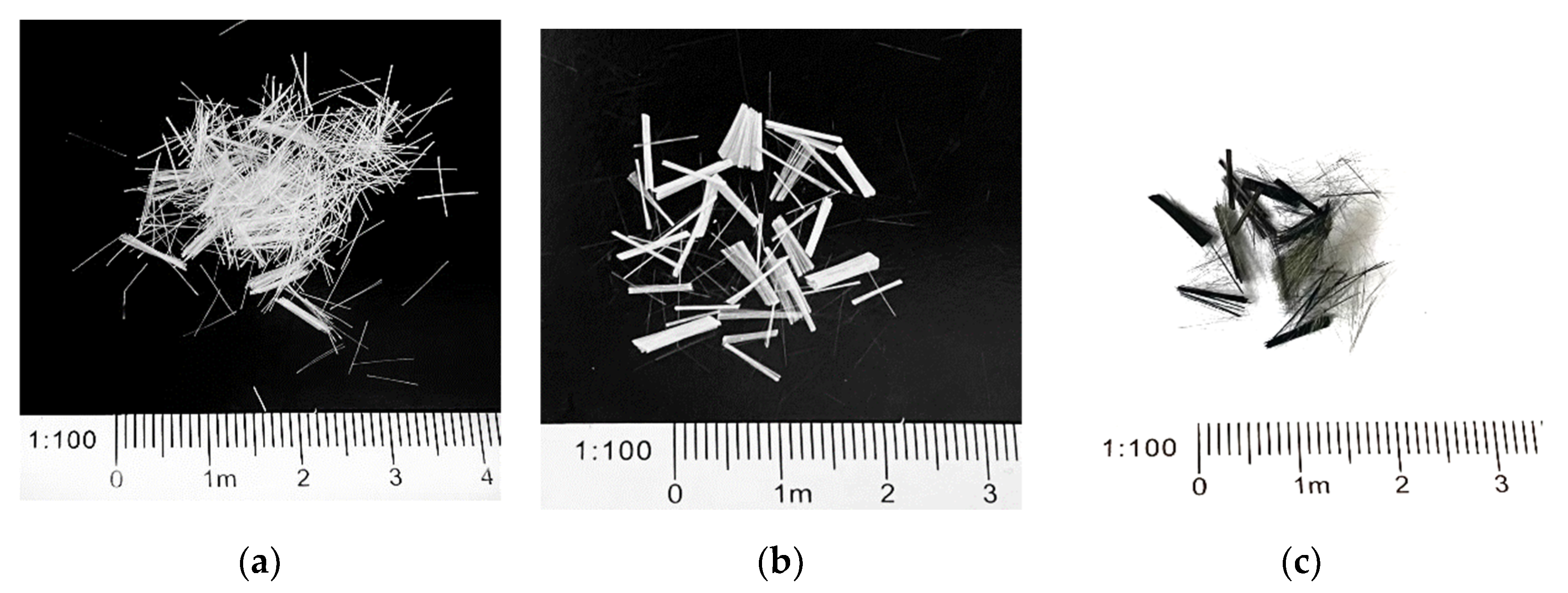
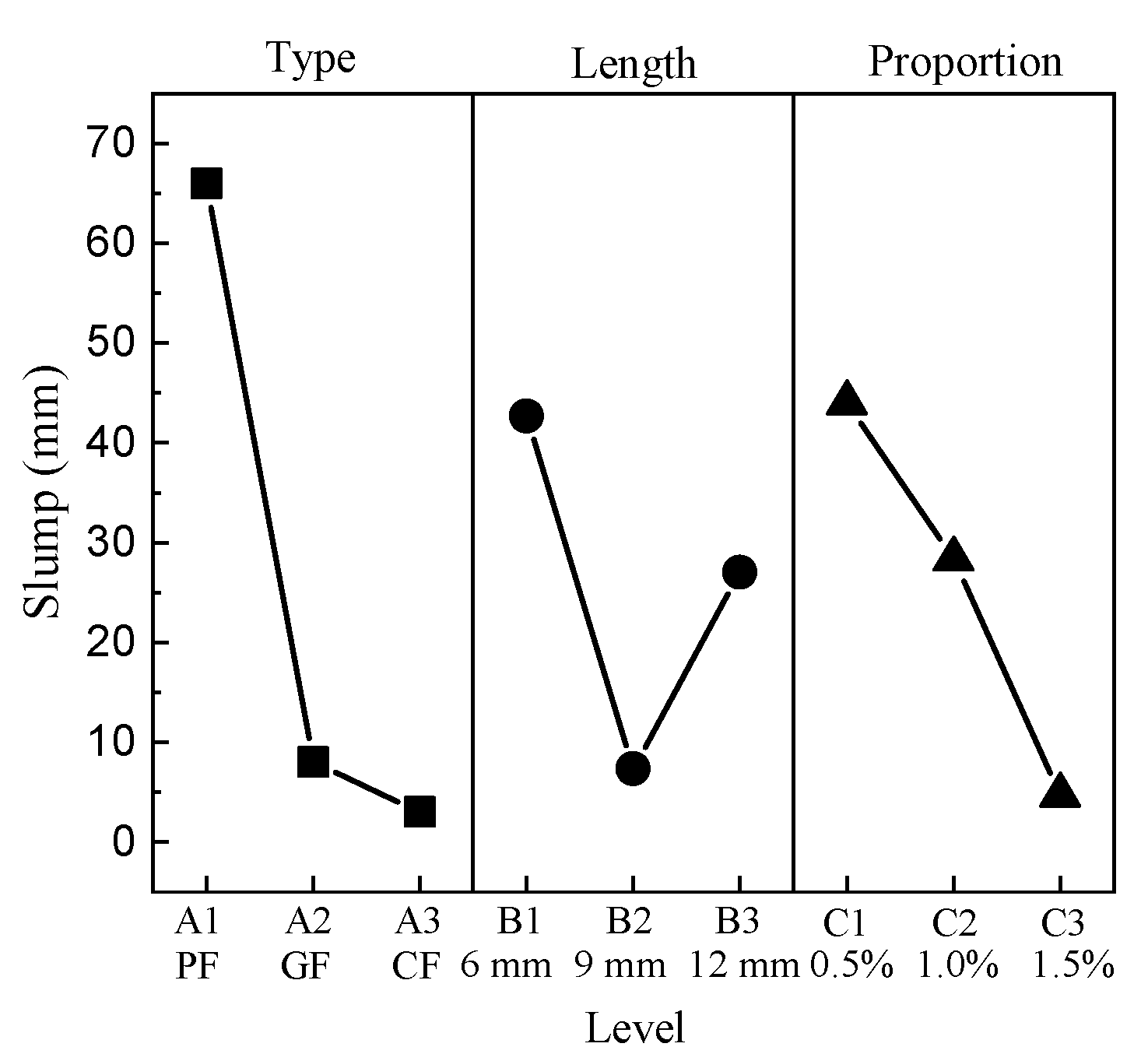
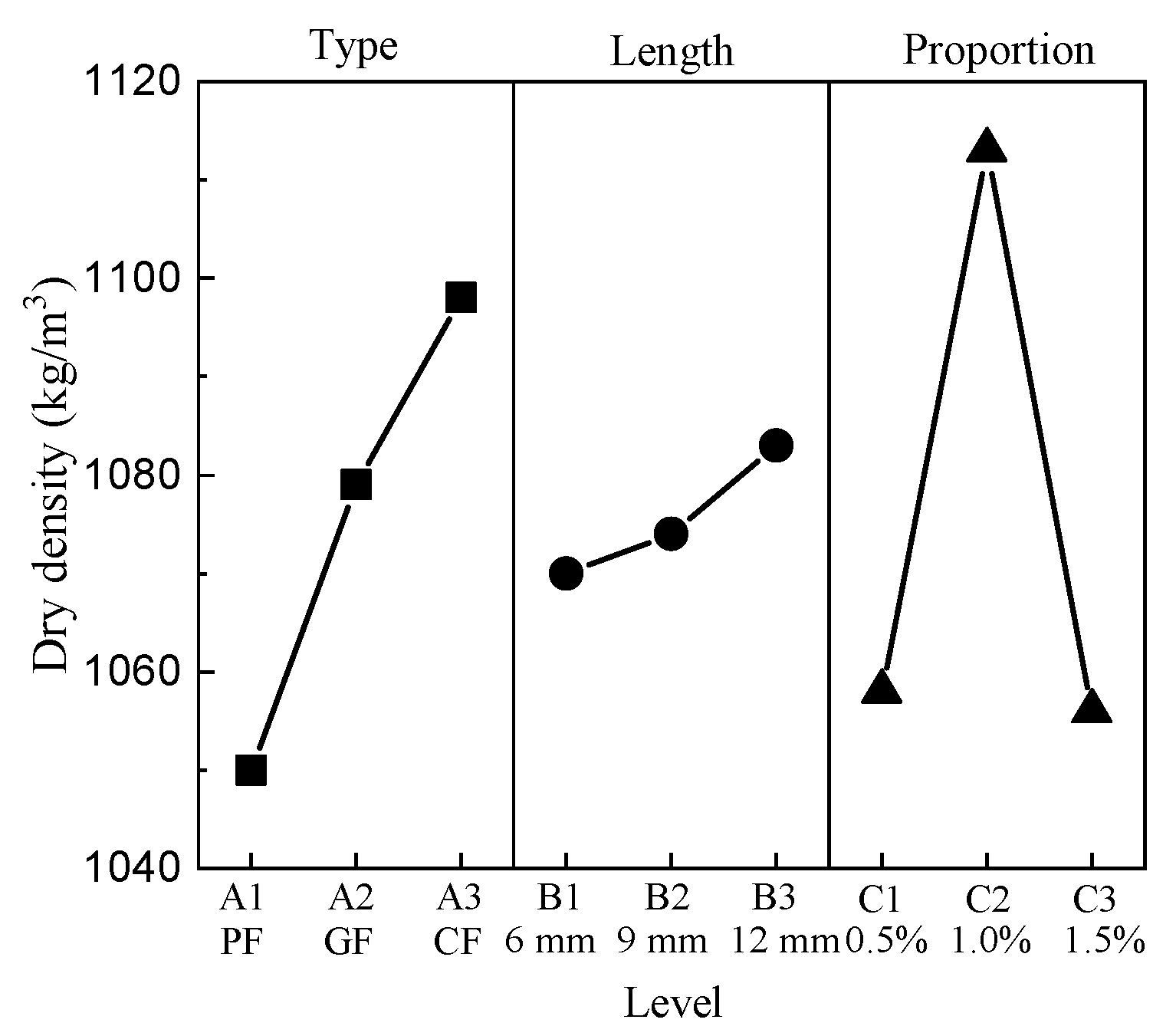
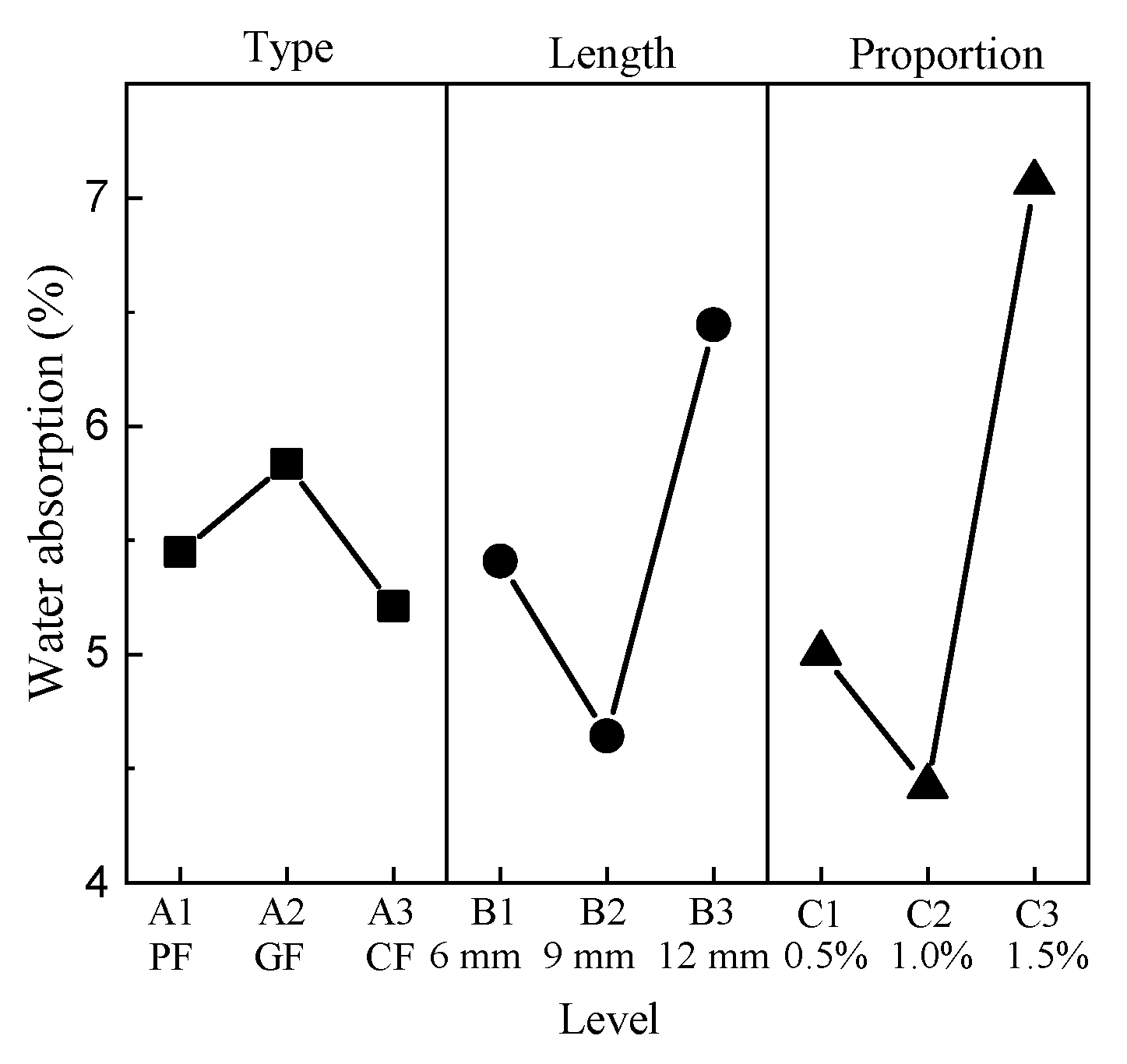
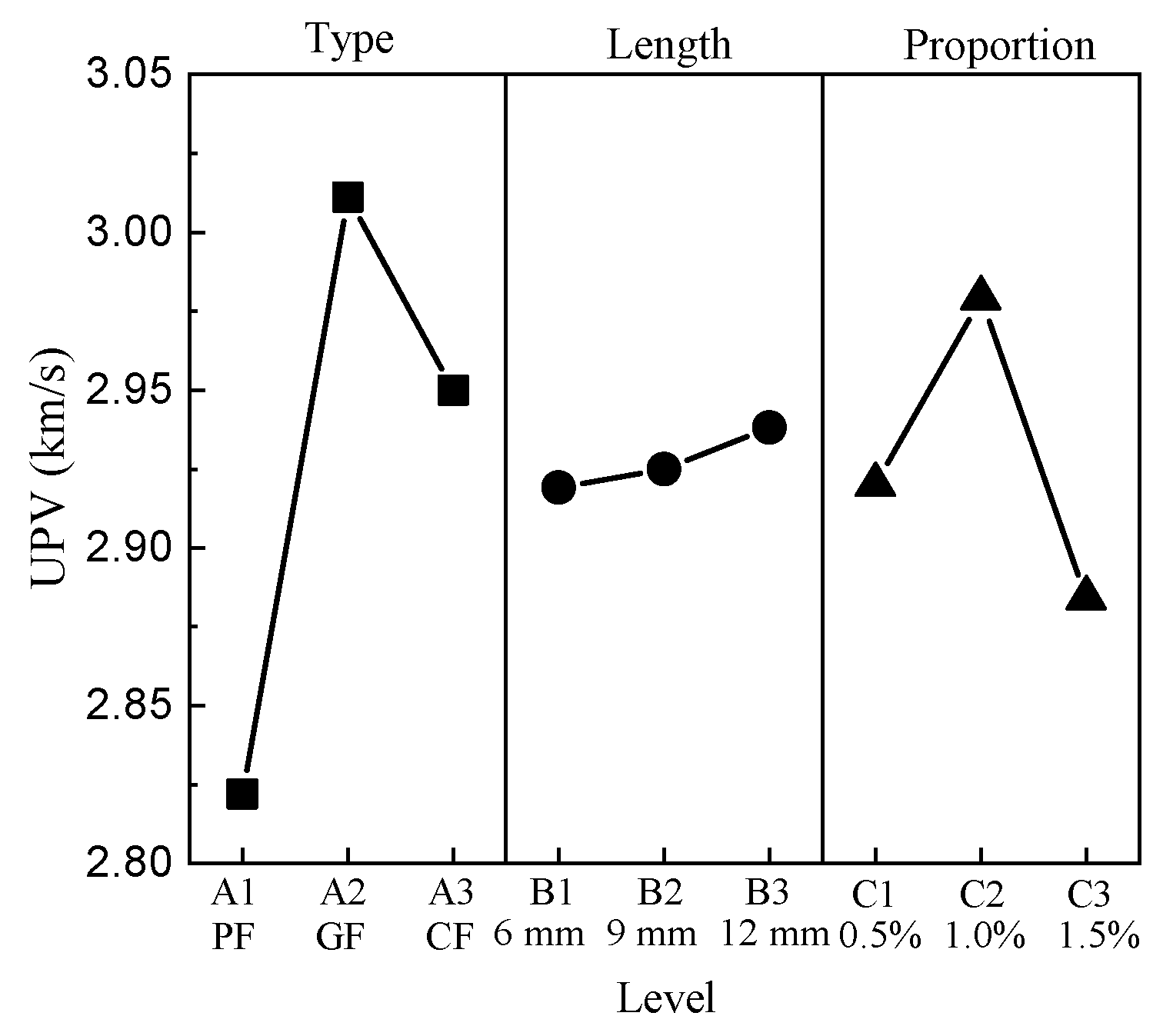
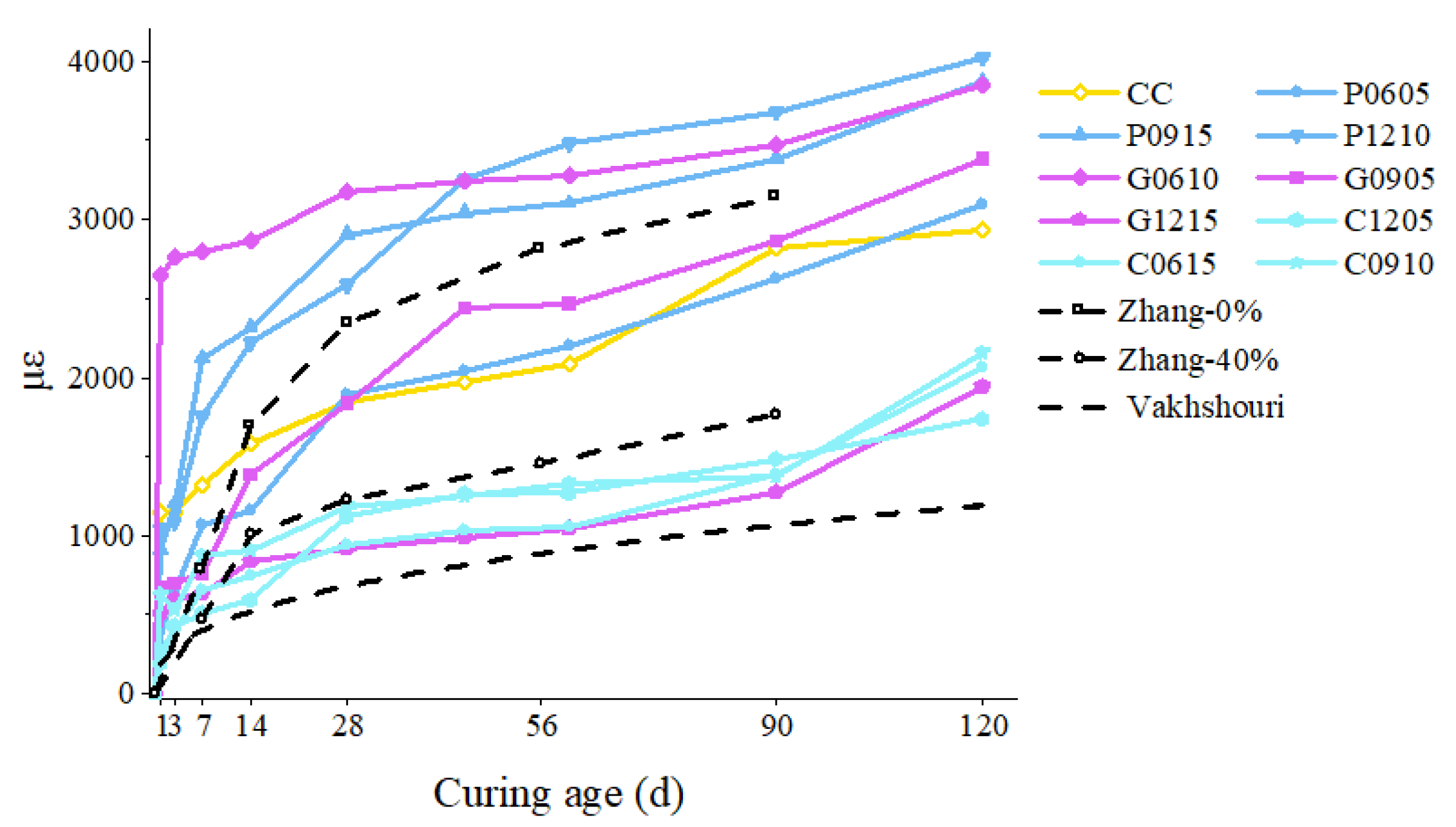
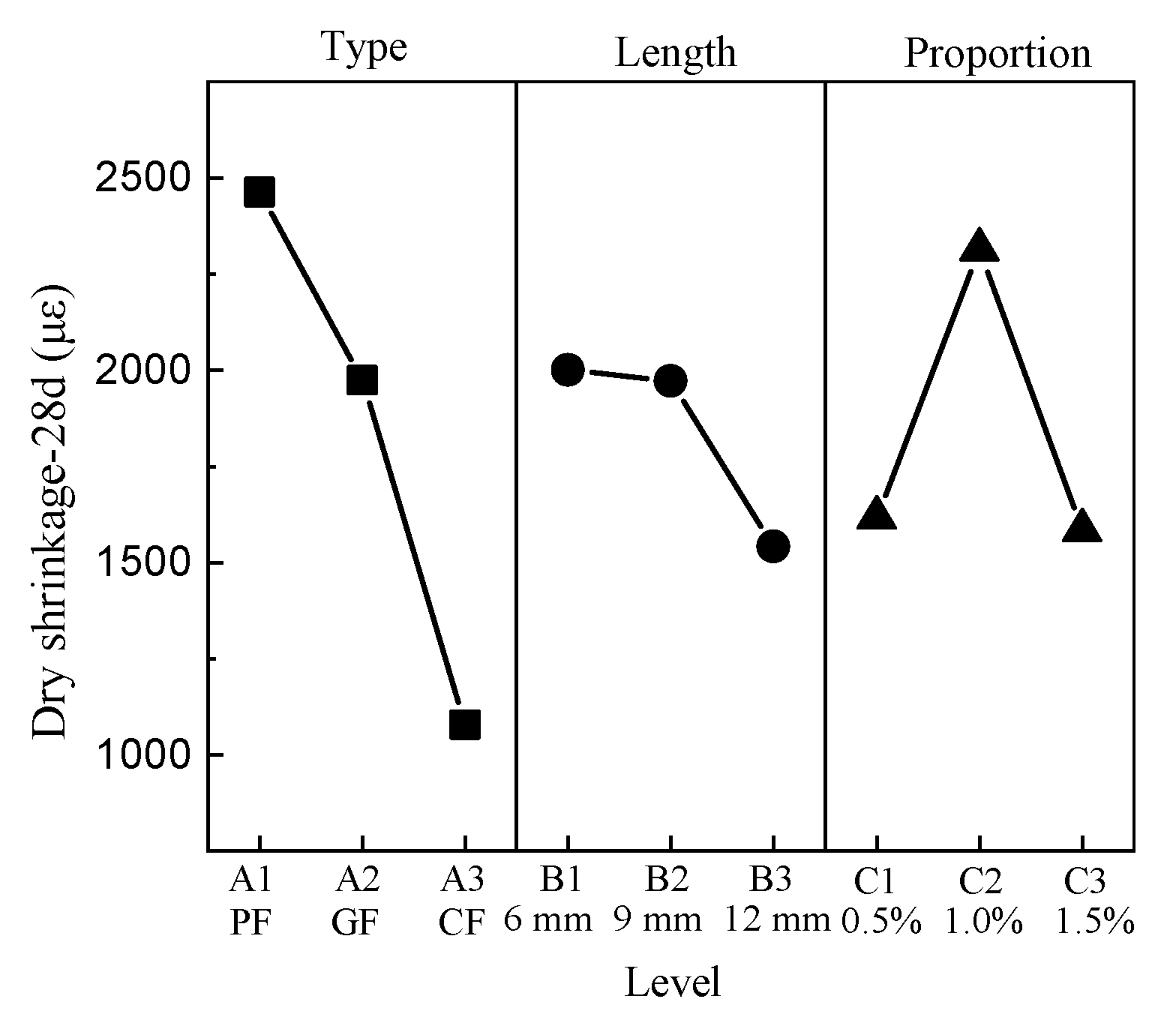
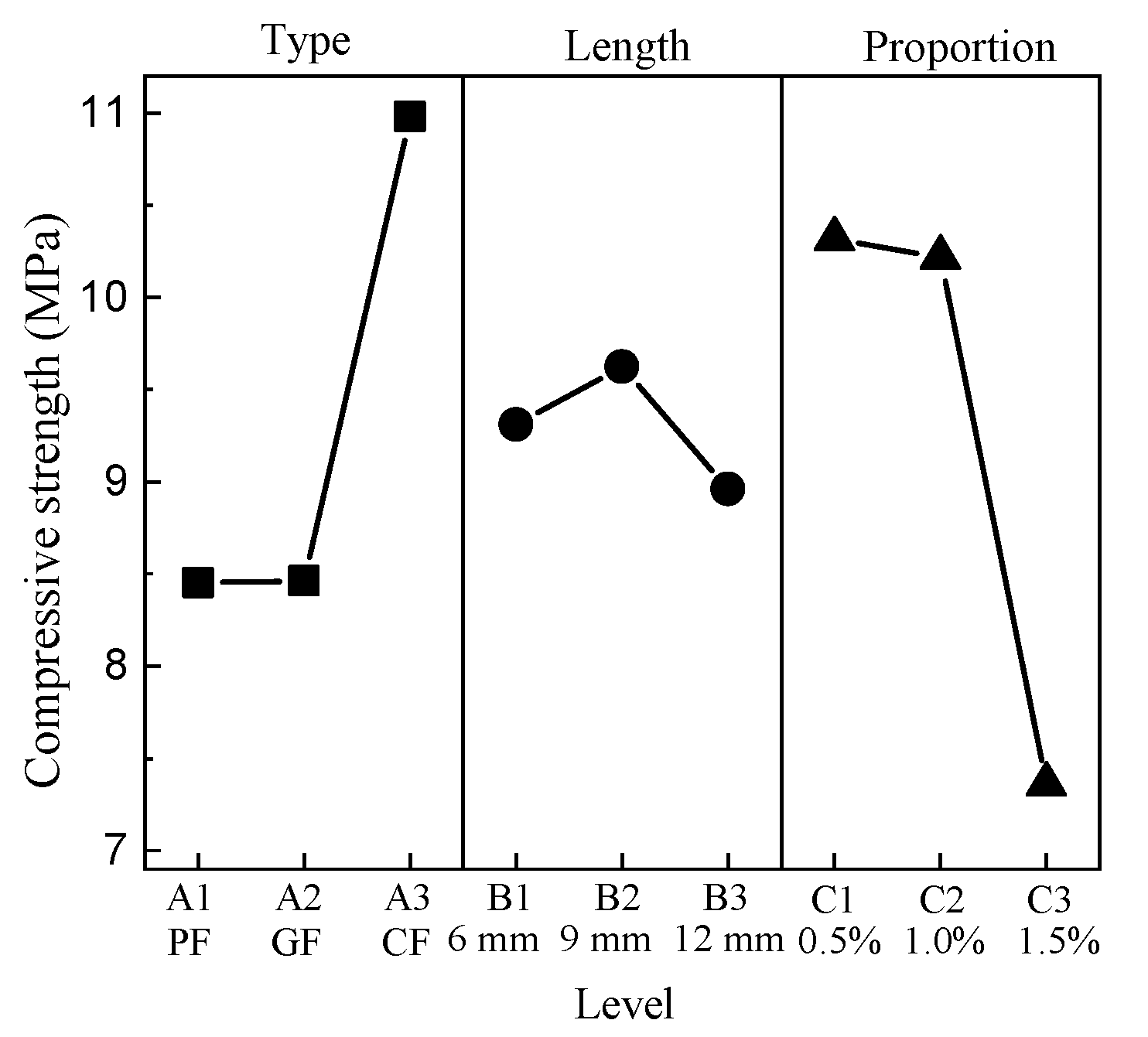
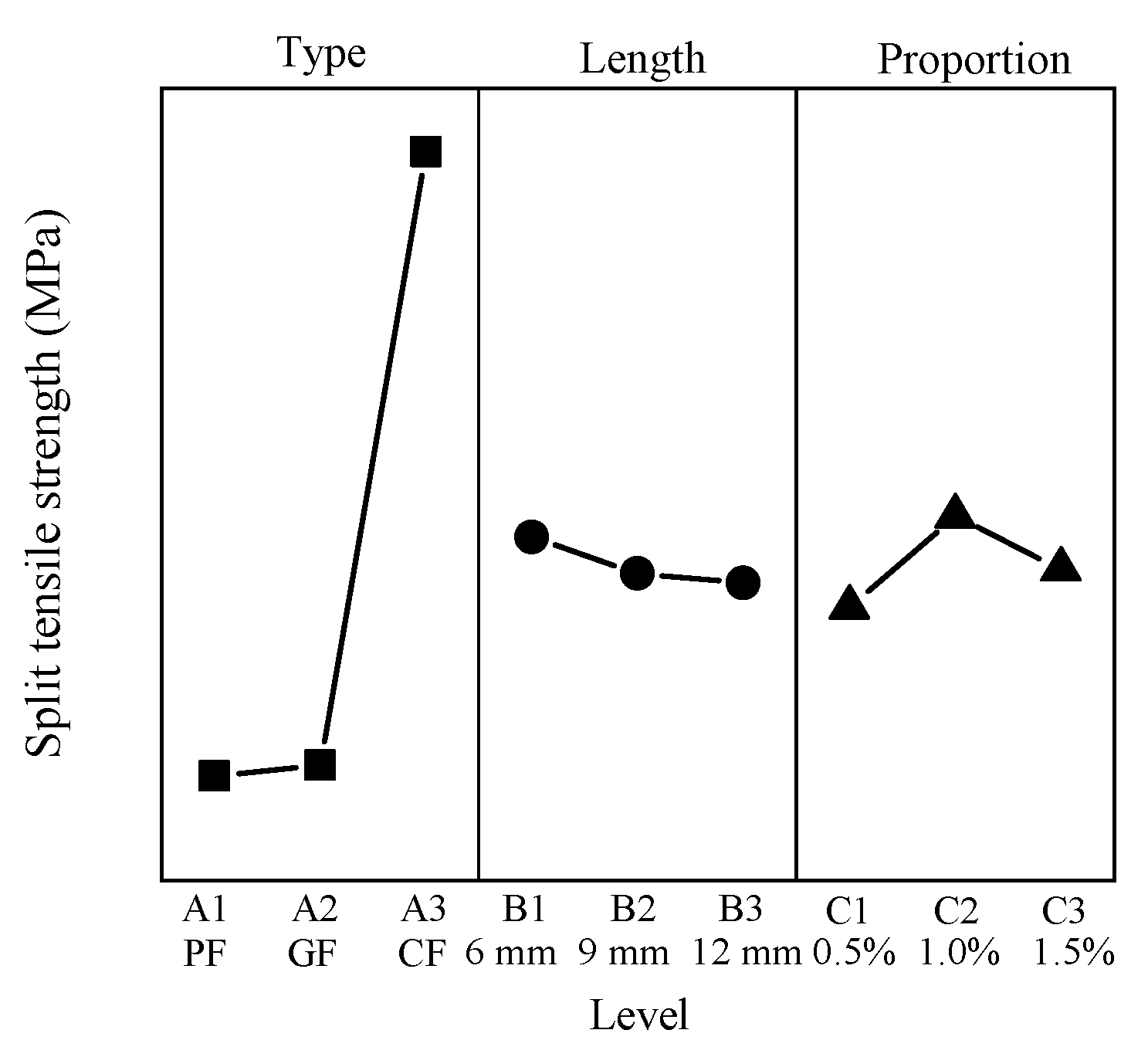

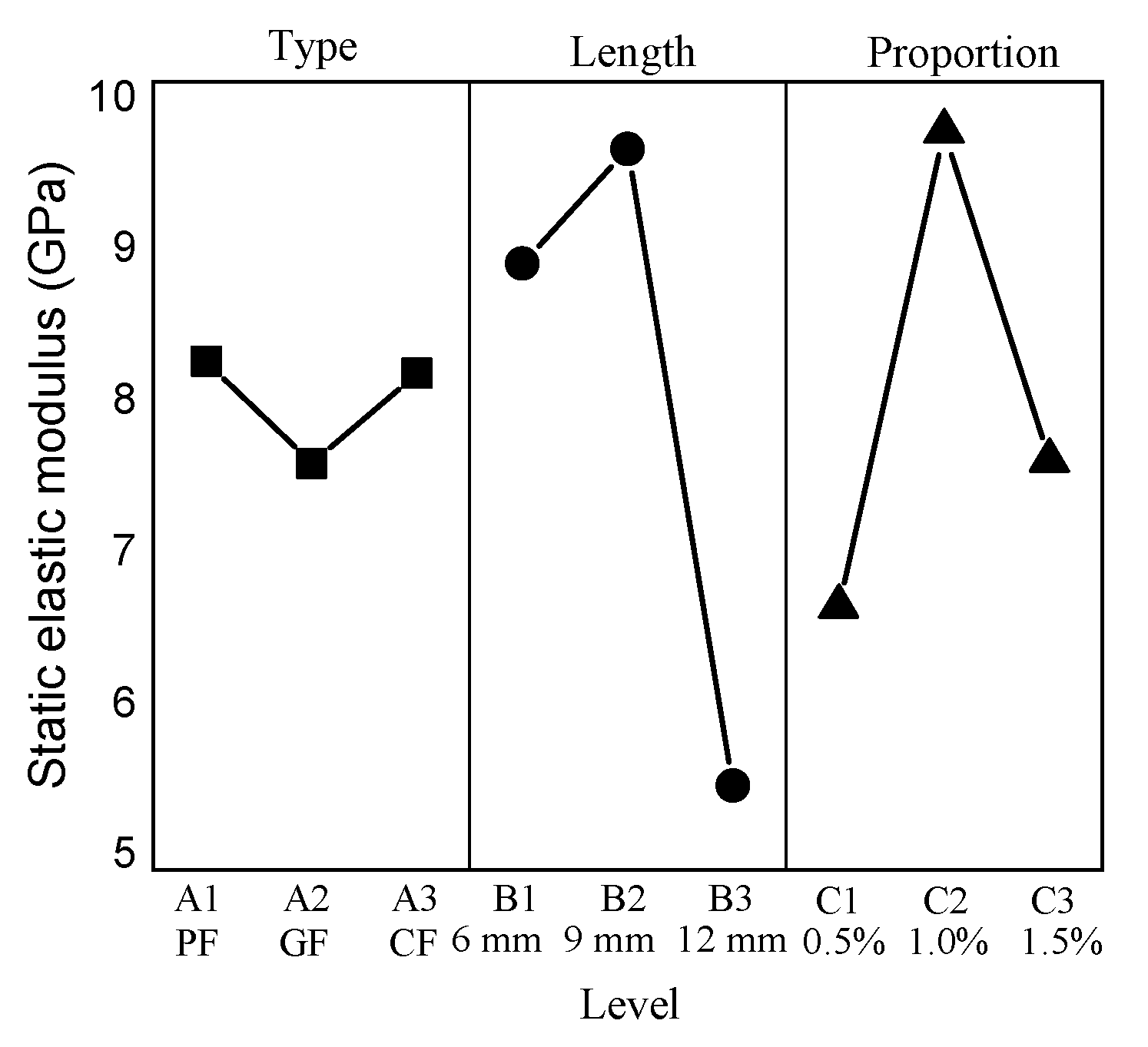
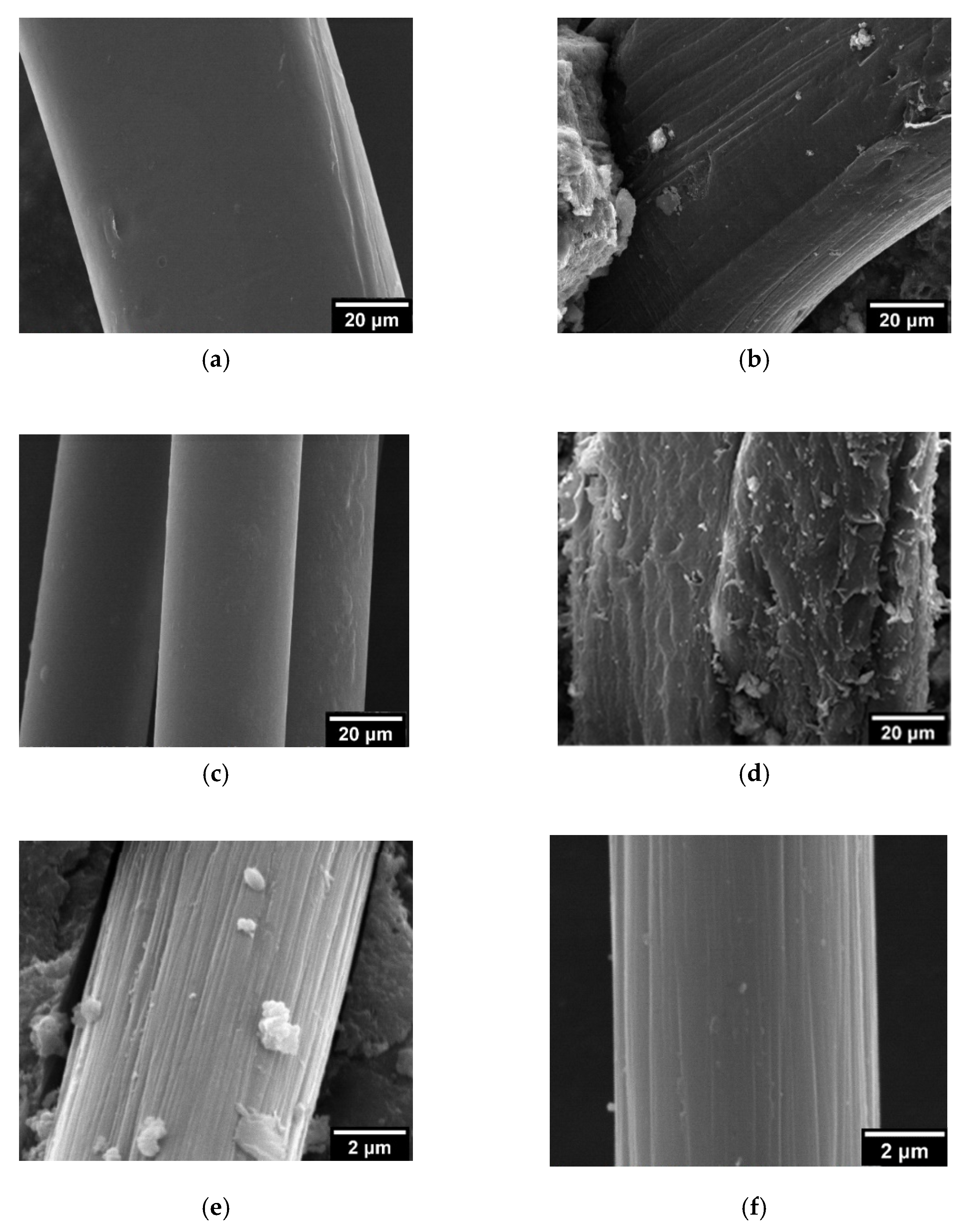

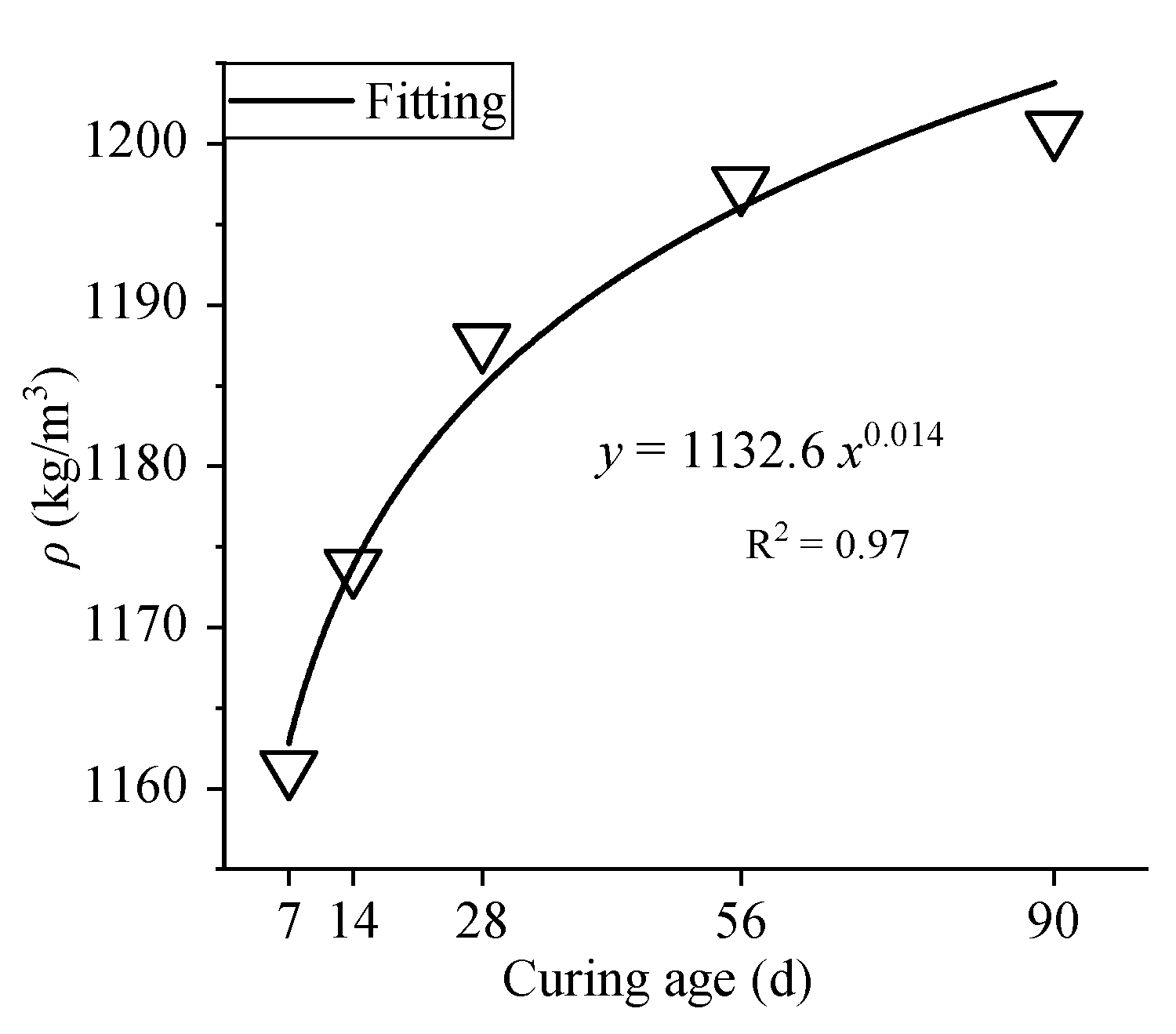
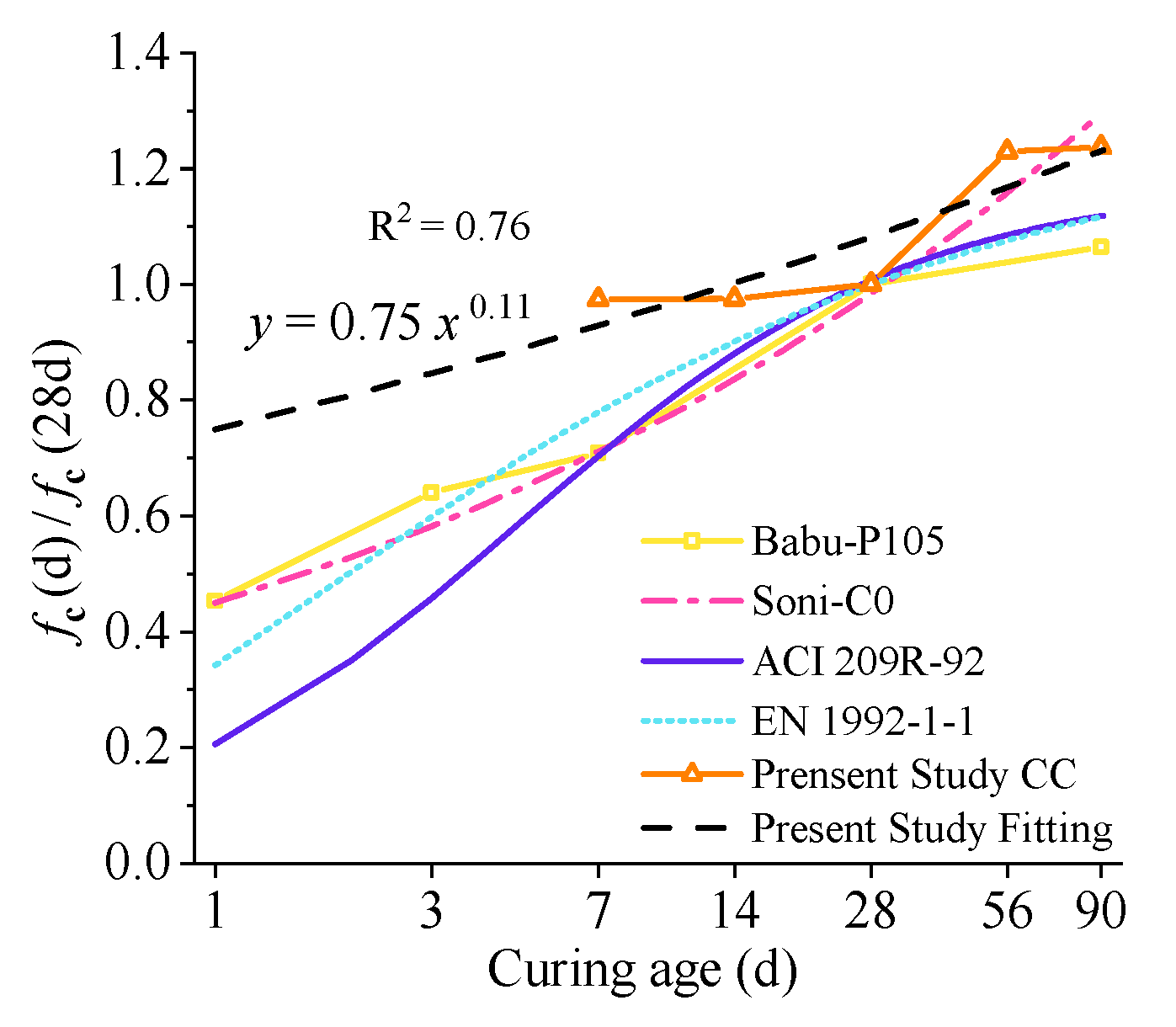
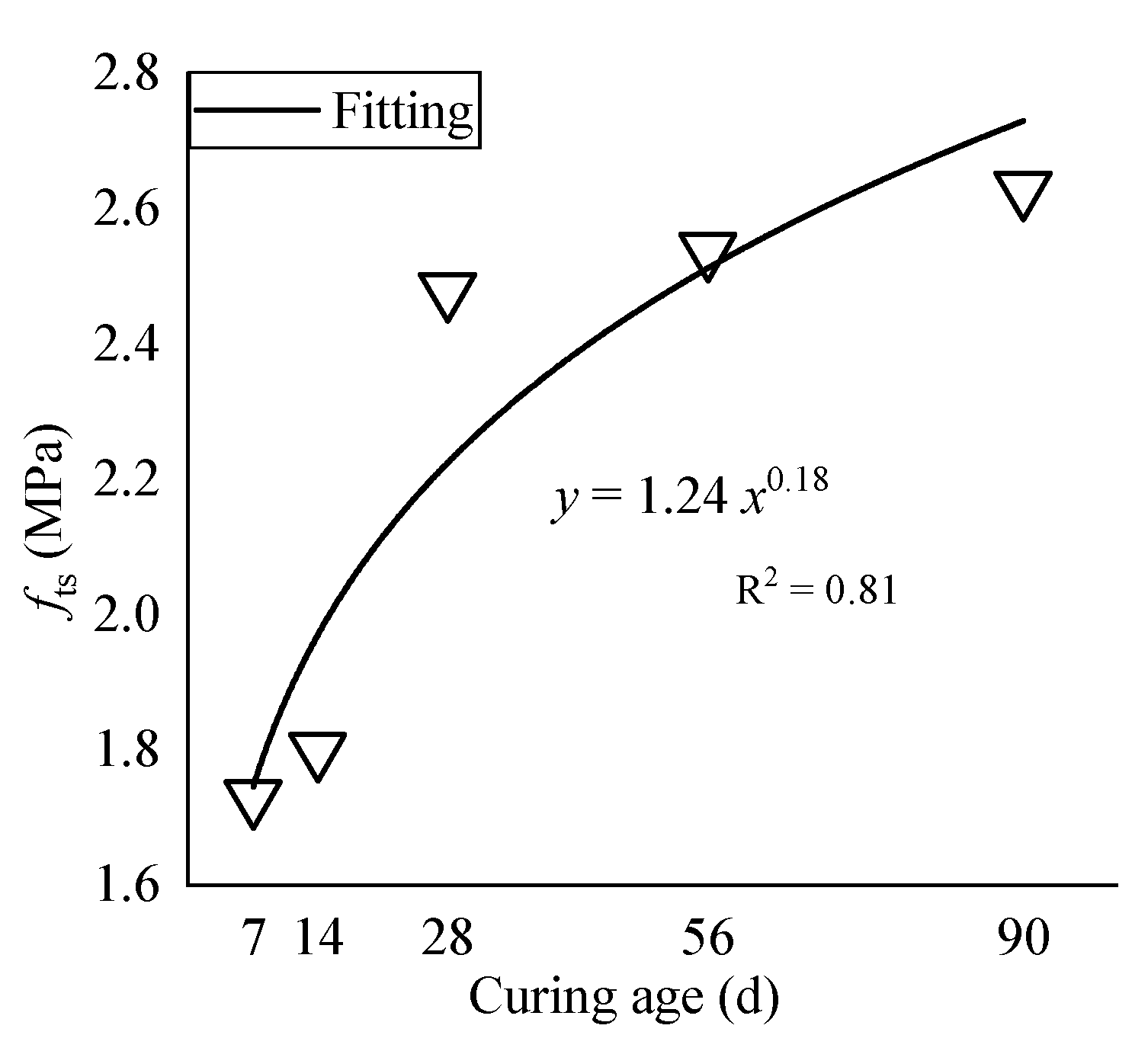
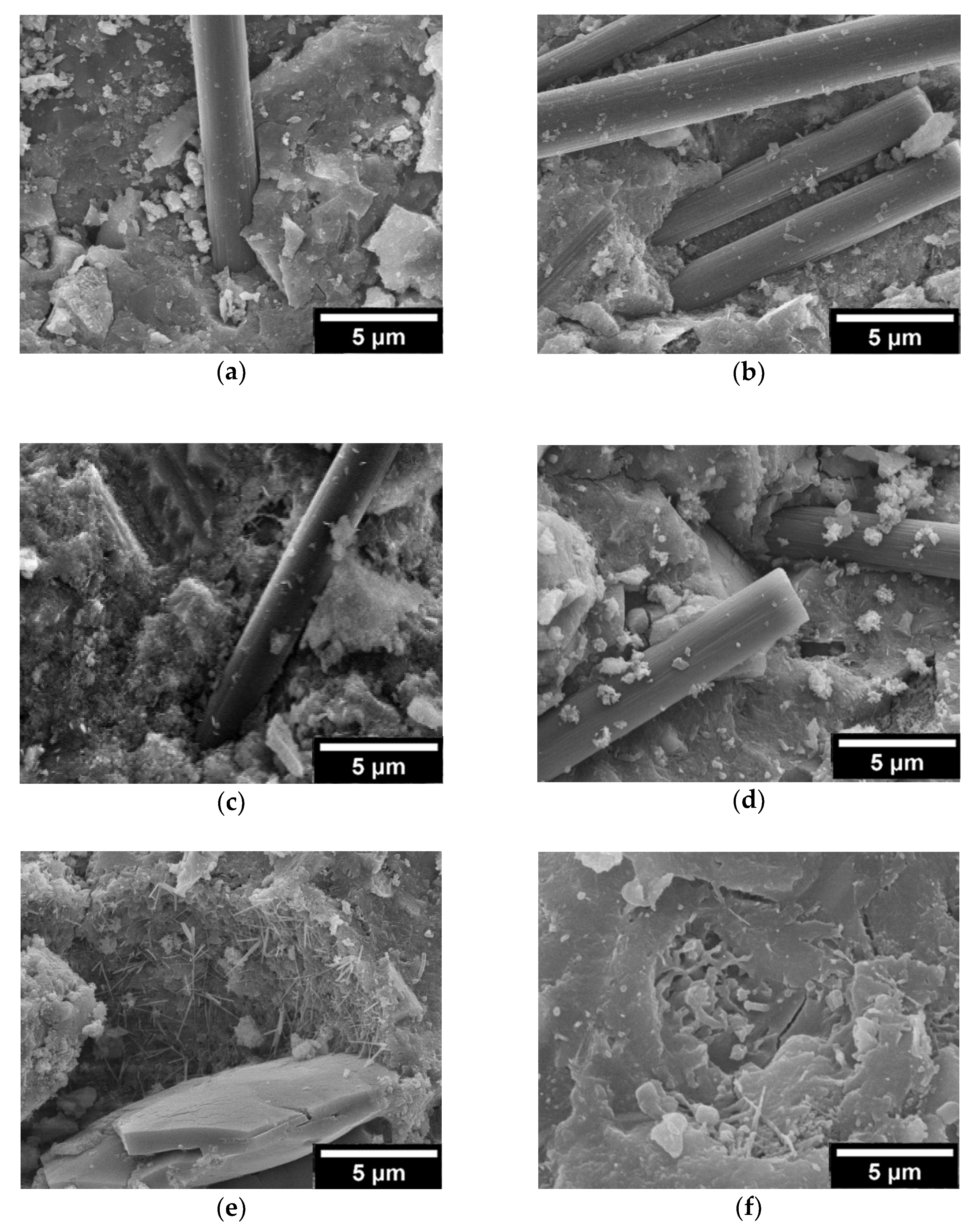
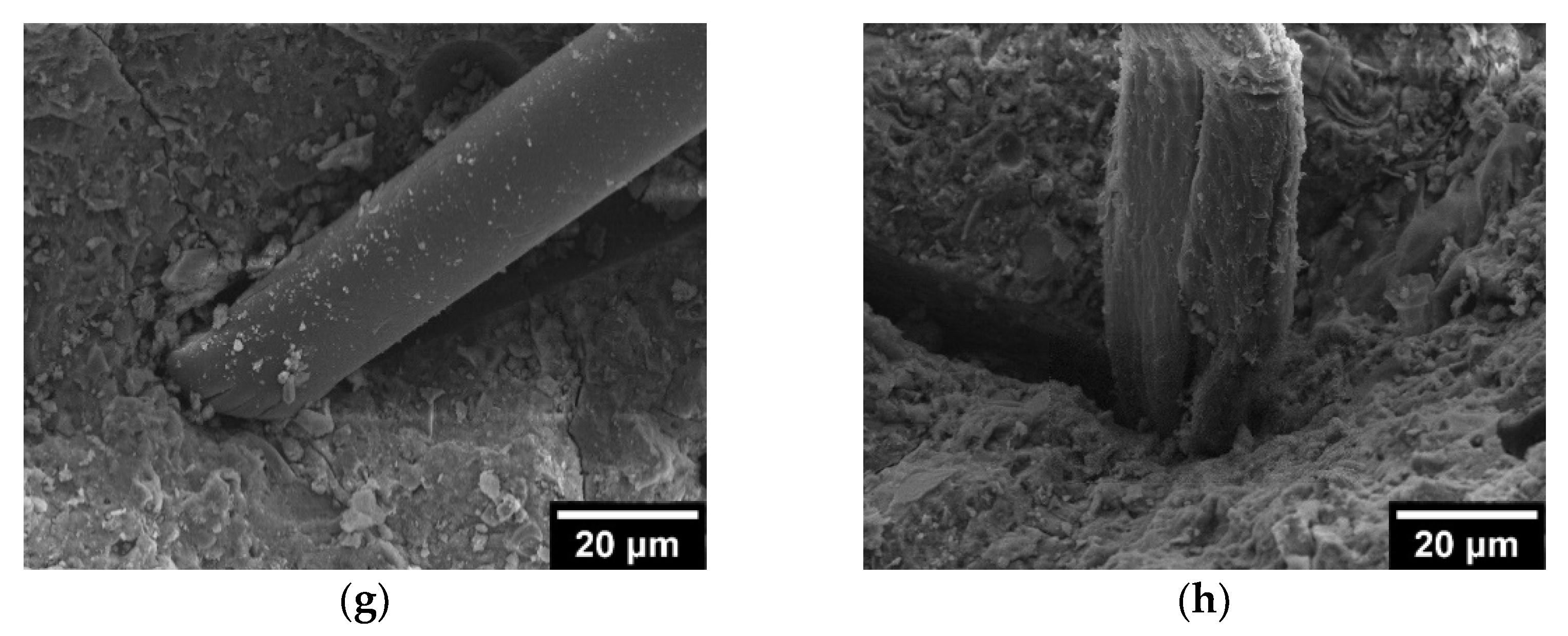
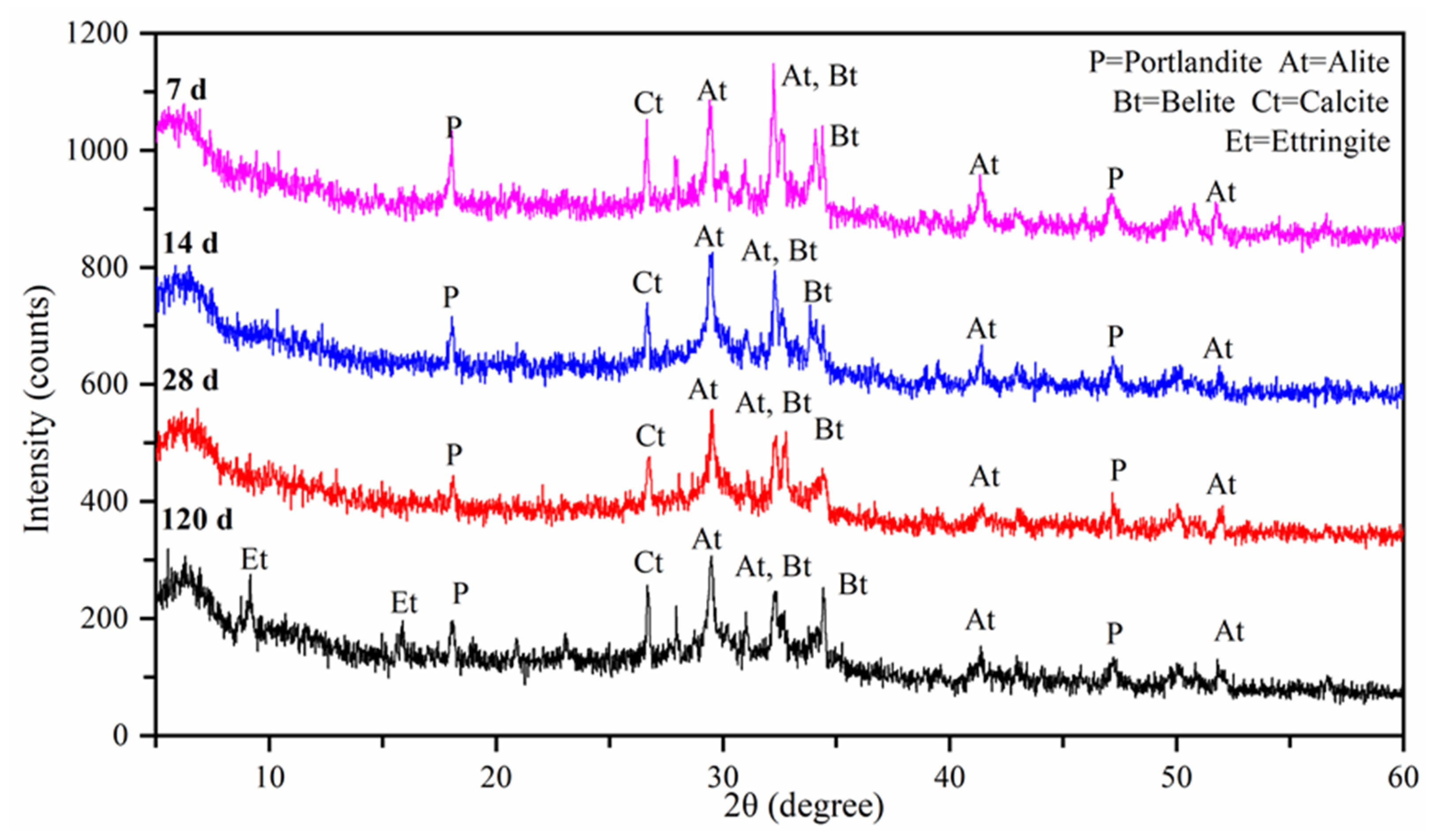
| SO3 | MgO | Cl− | Slag | Gypsum | Ignition Loss | Specific Surface Area |
|---|---|---|---|---|---|---|
| 2.20% | 3% | 0.04% | 12% | 6% | 4% | 358 m2/kg |
| Composition | SiO2 | Al2O3 | Fe2O3 | MgO | CaO | Na2O |
|---|---|---|---|---|---|---|
| w/% | 96.74% | 0.32 | 0.008 | 0.1 | 0.11 | 0.09 |
| Sieve Hole (mm) | 9.5 | 4.75 | 2.36 | 1.18 | 0.6 | 0.3 | 0.15 | <0.15 |
|---|---|---|---|---|---|---|---|---|
| sand sieve weight (g) | 691.0 | 705.0 | 681.2 | 572.0 | 561.2 | 554.0 | 555.0 | 464.8 |
| record weight (g) | 691.0 | 705.0 | 688.4 | 625.8 | 643.2 | 673.0 | 684.4 | 572.0 |
| sand sieve allowance (g) | 0.0 | 0.2 | 7.2 | 53.8 | 82.0 | 19.0 | 129.4 | 107.2 |
| sieve allowance percentage (%) | 0.0 | 0.0 | 1.4 | 10.8 | 16.5 | 23.9 | 25.9 | 21.5 |
| cumulative sieve remainder percentage (%) | 0.0 | 0.0 | 1.0 | 12.0 | 29.0 | 53.0 | 79.0 | 100.0 |
| through percentage | 100.0 | 100.0 | 99.0 | 88.0 | 71.0 | 47.0 | 21.00 | 0.00 |
| fineness modulus | 1.73 | |||||||
| Type | Density | Tensile Strength | Elastic Modulus | Breaking Elongation |
|---|---|---|---|---|
| PF | 0.91 g/cm3 | 360 MPa | 4236 MPa | 28.4% |
| GF | 2.5 g/cm3 | 469 MPa | 4286 MPa | 21.6% |
| CF | 1.80 g/cm3 | 4900 MPa | 240,000 MPa | 2.1% |
| Level | Factor | ||
|---|---|---|---|
| A-Type | B-Length (mm) | C-Proportion (%) | |
| 1 | PF | 6 | 0.5 |
| 2 | GF | 9 | 1.0 |
| 3 | CF | 12 | 1.5 |
| Mix Designation | Cement (kg/m3) | SF (kg/m3) | Water (kg/m3) | NRS (kg/m3) | SP (kg/m3) | EPS (kg/m3) | Fiber | ||
|---|---|---|---|---|---|---|---|---|---|
| Type | Length (mm) | Proportion (kg/m3) | |||||||
| CC | 508.91 | 127.23 | 152.67 | 407.12 | 4.07 | 10 | - | - | - |
| P0605 | 508.91 | 127.23 | 152.67 | 407.12 | 4.07 | 10 | PF(A1) | 6 (B1) | 4.55 (C1) |
| G0905 | 508.91 | 127.23 | 152.67 | 407.12 | 4.07 | 10 | GF(A2) | 9 (B2) | 12.50(C1) |
| C1205 | 508.91 | 127.23 | 152.67 | 407.12 | 4.07 | 10 | CF(A3) | 12(B3) | 9.10 (C1) |
| C0910 | 508.91 | 127.23 | 152.67 | 407.12 | 4.07 | 10 | CF(A3) | 9 (B2) | 18.20(C2) |
| G0610 | 508.91 | 127.23 | 152.67 | 407.12 | 4.07 | 10 | GF(A2) | 6 (B1) | 25.00(C2) |
| P1210 | 508.91 | 127.23 | 152.67 | 407.12 | 4.07 | 10 | PF(A1) | 12(B3) | 9.10 (C2) |
| P0915 | 508.91 | 127.23 | 152.67 | 407.12 | 4.07 | 10 | PF(A1) | 9 (B2) | 13.65(C3) |
| G1215 | 508.91 | 127.23 | 152.67 | 407.12 | 4.07 | 10 | GF(A2) | 12(B3) | 37.50(C3) |
| C0615 | 508.91 | 127.23 | 152.67 | 407.12 | 4.07 | 10 | CF(A3) | 6 (B1) | 27.30(C3) |
| Mix Designation | Slump (mm) | Dry Density (kg/m3) | Water Absorption (%) | UPV (km/s) | Compressive Strength (MPa) | Splitting Tensile Strength (MPa) | Uniaxial Compressive Strength (MPa) | Static Elastic Modulus (GPa) |
|---|---|---|---|---|---|---|---|---|
| CC | 196 | 1036.60 | 5.5 | 2.86 | 8.58 | 0.91 | 7.68 | 6.97 |
| P0605 | 115 | 1043.71 | 6.1 | 2.83 | 9.41 | 0.88 | 6.63 | 7.51 |
| G0905 | 10 | 1083.38 | 3.5 | 3.02 | 9.19 | 1.17 | 9.98 | 8.48 |
| C1205 | 7 | 1045.44 | 5.4 | 2.91 | 12.35 | 2.04 | 11.11 | 3.92 |
| C0910 | 1 | 1151.20 | 4.5 | 3.02 | 12.16 | 2.04 | 8.86 | 11.32 |
| G0610 | 12 | 1069.16 | 4.4 | 3.01 | 10.08 | 1.23 | 10.09 | 9.91 |
| P1210 | 72 | 1118.93 | 4.4 | 2.90 | 8.41 | 1.30 | 8.78 | 8.09 |
| P0915 | 11 | 986.42 | 5.9 | 2.74 | 7.53 | 1.06 | 10.61 | 9.17 |
| G1215 | 2 | 1085.07 | 9.5 | 3.00 | 6.12 | 0.89 | 3.24 | 4.35 |
| C0615 | 1 | 1097.71 | 5.7 | 2.92 | 8.43 | 2.35 | 4.06 | 9.29 |
| Name | Age (days) | Dry Shrinkage (kg/m3) | Compressive Strength (MPa) | Splitting Tensile Strength (MPa) |
|---|---|---|---|---|
| OC-7 d | 7 | 1161.28 | 9.43 | 1.73 |
| OC-14 d | 14 | 1173.80 | 9.44 | 1.80 |
| OC-28 d | 28 | 1187.78 | 9.68 | 2.48 |
| OC-56 d | 56 | 1197.55 | 11.90 | 2.54 |
| OC-90 d | 90 | 1200.95 | 11.98 | 2.63 |
Publisher’s Note: MDPI stays neutral with regard to jurisdictional claims in published maps and institutional affiliations. |
© 2022 by the authors. Licensee MDPI, Basel, Switzerland. This article is an open access article distributed under the terms and conditions of the Creative Commons Attribution (CC BY) license (https://creativecommons.org/licenses/by/4.0/).
Share and Cite
Sun, Y.; Li, C.; You, J.; Bu, C.; Yu, L.; Yan, Z.; Liu, X.; Zhang, Y.; Chen, X. An Investigation of the Properties of Expanded Polystyrene Concrete with Fibers Based on an Orthogonal Experimental Design. Materials 2022, 15, 1228. https://doi.org/10.3390/ma15031228
Sun Y, Li C, You J, Bu C, Yu L, Yan Z, Liu X, Zhang Y, Chen X. An Investigation of the Properties of Expanded Polystyrene Concrete with Fibers Based on an Orthogonal Experimental Design. Materials. 2022; 15(3):1228. https://doi.org/10.3390/ma15031228
Chicago/Turabian StyleSun, Yi, Chenxi Li, Junjie You, Changming Bu, Linwen Yu, Zhitao Yan, Xinpeng Liu, Yi Zhang, and Xianrui Chen. 2022. "An Investigation of the Properties of Expanded Polystyrene Concrete with Fibers Based on an Orthogonal Experimental Design" Materials 15, no. 3: 1228. https://doi.org/10.3390/ma15031228







